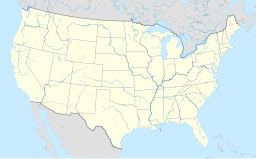Homer City, Pennsylvania
| Borough of Homer City | |
| Borough | |
|
Businesses on Main Street
|
|
| Country | United States |
|---|---|
| State | Pennsylvania |
| County | Indiana |
| Elevation | 1,375 ft (419.1 m) |
| Coordinates | 40°32′23″N 79°09′33″W / 40.53972°N 79.15917°WCoordinates: 40°32′23″N 79°09′33″W / 40.53972°N 79.15917°W |
| Area | 1.5 sq mi (3.9 km2) |
| - land | 1.5 sq mi (4 km2) |
| - water | 0.0 sq mi (0 km2), 0% |
| Population | 1,707 (2010) |
| Mayor | Kenneth "Kal" Cecconi |
| Timezone | EST (UTC-5) |
| - summer (DST) | EDT (UTC-4) |
| ZIP code | 15748 |
| Area code | 724 |
|
Website: www |
|
Homer City is a borough in Indiana County, Pennsylvania, United States. The population was 1,707 at the 2010 census. Homer City is located in the Indiana metro area. The community was named for the famous Greek poet Homer by founder William Wilson in 1854. It was incorporated as a borough in 1872.
The two treaties of Fort Stanwix (of 1768 and, after American independence, of 1784) secured the westward expansion of Pennsylvania into the region where the Borough of Homer City is now located, on land inhabited by the six Indian nations. With white settlement these new territories were initially organized as part of existing counties in eastern and central Pennsylvania. White settlers were few in the eighteenth century and encountering Indians still very much a part of daily life. Any degree of stability and safety came only after the Battle of Fallen Timbers (1794). Indiana County was carved out of Westmoreland and Lycoming counties in 1803 and divided into three townships: Wheatfield, Armstrong, and Mahoning. The confluence of Two Lick and Yellow creeks (present-day Homer City) was a contender for the seat of government for the new county, but instead the "extraordinary overtures" of George Clymer, a local landowners and a signer of the Declaration of Independence, saw the county seat situated instead in what would become the Borough of Indiana. Center Township - the unincorporated area surrounding present-day Homer City - was created from a portion of Armstrong Township in 1807, its landscape dotted with larger and smaller family homesteads (farms) and an increasing number of mills and trading posts.
Parts of Center Township were settled early on by Scots-Irish Presbyterians as in other parts of Indiana County, but Methodist families of English and Welsh descent came to dominate the Homer City area, and they remained prominent in its civic and commercial life well into the twentieth century. William Wilson laid out the village of Homer in 1854 naming it after the Classical Greek poet. For several years, however, its post office was designated Phillips Mill (or Mills on some maps), a name derived from that of early settler Armour Phillips, Sr. When the village became a borough in 1872 - with the consolidation and annexation of neighboring parcels - more and more it was referred to as Homer City.
With a post office and a stop (later station) on the Pennsylvania Railroad line, the Borough of Homer City developed along the lines of many small towns in the late nineteenth and early twentieth centuries. It traditionally offered goods and services including merchants, a bank, medical professionals, craftsmen, and schools not only to borough residents, but also to inhabitants of surrounding, rural Center Township. The township's development took a different path. Enduring settlements beyond family homesteads awaited the establishment of villages (company towns) by coal companies in the early twentieth century. More often than not they bore the names of the companies, their owners, families and company executives (e.g., Waterman, Graceton, Luciusboro) as in other parts of Indiana County.
...
Wikipedia



